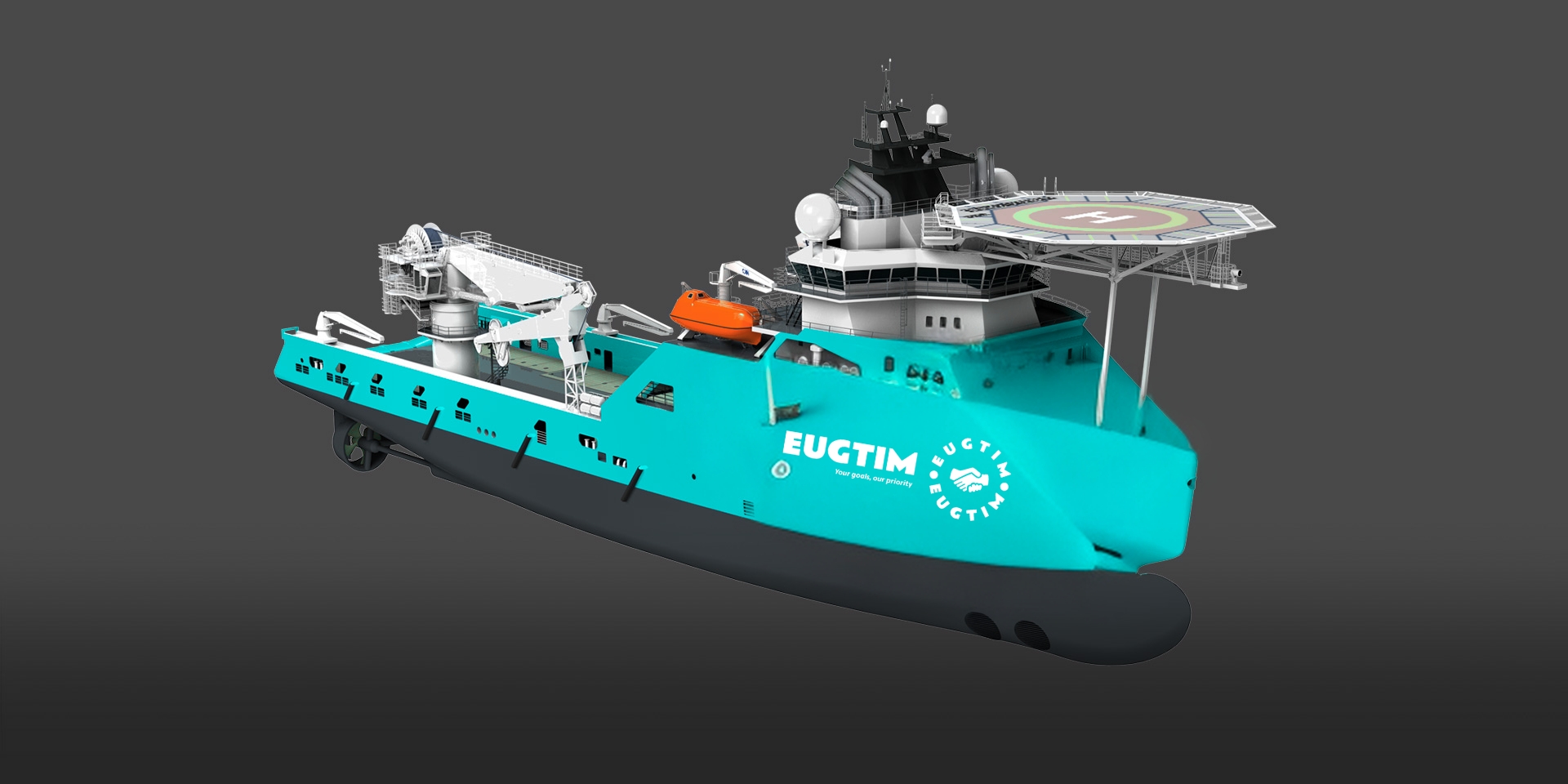
LANDING DECK FOR HELICOPTERS, SUITABLE FOR HELICOPTERS THE SIZE OF A BOEING CH 47 CHINOOK.
COMPUTER-CONTROLLED SYSTEM TO AUTOMATICALLY MAINTAIN A VESSEL’S POSITION BY USING ITS OWN PROPELLERS AND THRUSTERS.
THE CRANE, TYPICALLY ACTIVE HEAVE COMPENSATED, SAFELY MOVES HEAVY LOADS WITH LONG BOOM IN CHOPPY SEAS.
A LARGE NUMBER OF PERSONS CAN BE HOUSED ONBOARD THE CONSTRUCTION VESSEL.
FLEXIBLE ROV EQUIPMENT FOR SUBSEA MAINTENANCE TASKS AND INSPECTIONS.
LARGE DECK SURFACES PROVIDE PLENTY OF SPACE FOR COMPONENTS AND EQUIPMENT WAITING TO BE INSTALLED.
THE STREAMLINED BOW ENSURES A SMOOTH RIDE IN THE CURRENT.
A POWERFUL PROPULSION SYSTEM ENSURES HIGH SPEEDS AND PRECISE POSITIONING.
* THE VESSELS SHOWN HERE ARE EXEMPLARY MODELS ONLY.
Offshore construction vessels are versatile and used for building underwater projects like laying cables, installing foundations, and setting up tidal power plants. They are usually equipped with a dynamic positioning (DP) system to stay steady in the water. A helicopter landing deck allows crew changes without the vessel needing to go back to port, so it can stay offshore for a long time. These vessels have a powerful crane to lift heavy parts, even in deep water and rough seas, and to maintain wind turbines and their foundations. They have large decks and plenty of space for crews and equipment. Some also use underwater robots (ROVs) controlled from the ship to do tasks and inspect underwater structures all day and night. Many construction vessels also have a moon pool, which is a special opening in the hull, making diving operations safer.